Q1 (i): Your father bought a saucepan made of two different materials, A and B. The materials A and B have the following properties —
(a) Both A and B are good conductors of heat
(b) Both A and B are poor conductors of heat
(c) A is a good conductor and B is a poor conductor of heat
(d) A is a poor conductor and B is a good conductor of heat
Ans: (c) A is a good conductor and B is a poor conductor of heat
Explanation: Saucepans usually have metal bases (good conductors) for heating and handles made of plastic or wood (poor conductors) to prevent burns.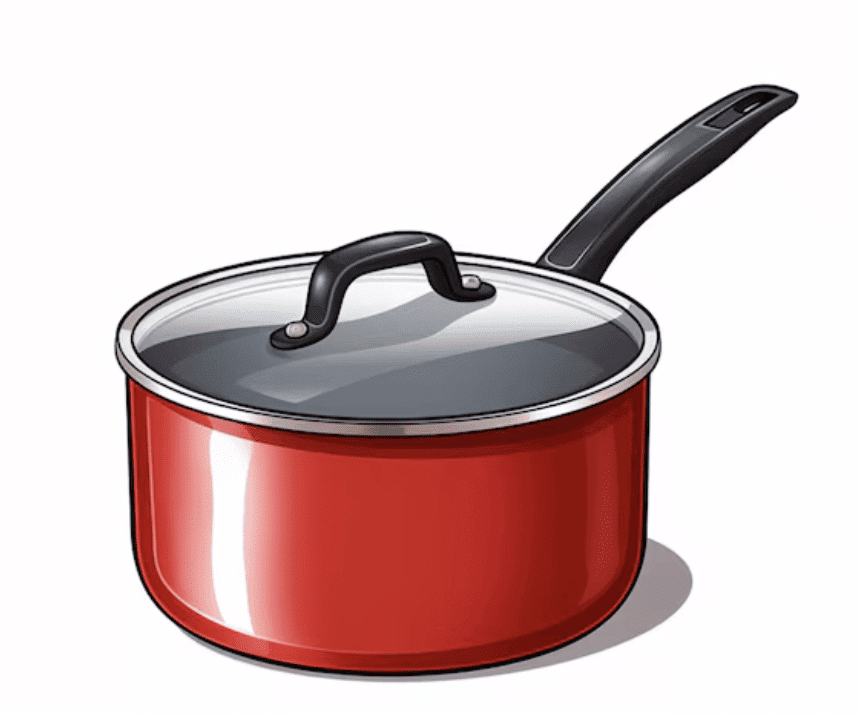
(ii): Pins are stuck to a metal strip with wax and a burning candle is kept below the strip. Which of the following will happen?
(a) All the pins will fall almost at the same time
(b) Pins I and II will fall earlier than pins III and IV
(c) Pins I and II will fall later than pins III and IV
(d) Pins II and III will fall almost at the same time
Ans: (b) Pins I and II will fall earlier than pins III and IV
Explanation: Heat travels from the heated end to the other end via conduction. The pins near the flame fall first as the wax melts.
(iii): A smoke detector is a device that detects smoke and sounds an alarm. Where should it be placed in a room?
(a) Near the floor
(b) In the middle of a wall
(c) On the ceiling
(d) Anywhere in the room
Ans: (c) On the ceiling
Explanation: Smoke rises up due to convection, so detectors must be placed at the highest point.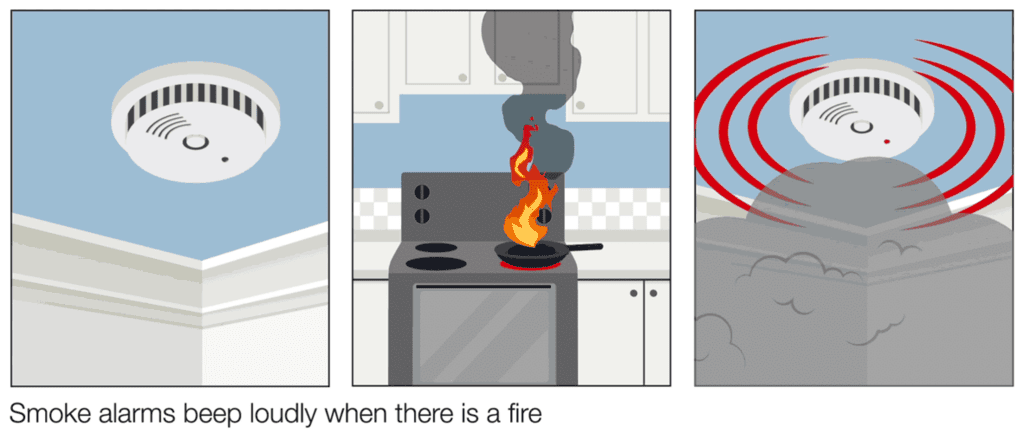
Q2: A shopkeeper serves you cold lassi in a tumbler that has a leak. You are given another tumbler to place it in. Will this help keep the lassi cold for longer? Explain.
Ans: Yes, it will help.
Explanation: The air between the two tumblers acts as an insulator (a poor conductor of heat) and slows down the heat transfer from outside.
Q3 (i): Heat transfer takes place in solids through convection.
Ans: False
Reason: In solids, heat transfer happens through conduction, not convection.
(ii): Heat transfer through convection takes place by the actual movement of particles.
Ans: True
Reason: In convection, particles of liquids and gases move to transfer heat.
(iii): Areas with clay materials allow more seepage of water than those with sandy materials.
Ans: False
Reason: Clay has smaller pores than sand, so it allows less seepage.
(iv): The movement of cooler air from land to sea is called land breeze.
Ans: True
Reason: At night, land cools faster, and cooler air moves towards the sea.
Q4: Some ice cubes placed in a dish melt into water after some time. Where do they get heat for this transformation?
Ans: When ice cubes are placed in a dish, they start to melt and turn into water. For this transformation to happen, the ice needs to absorb heat energy.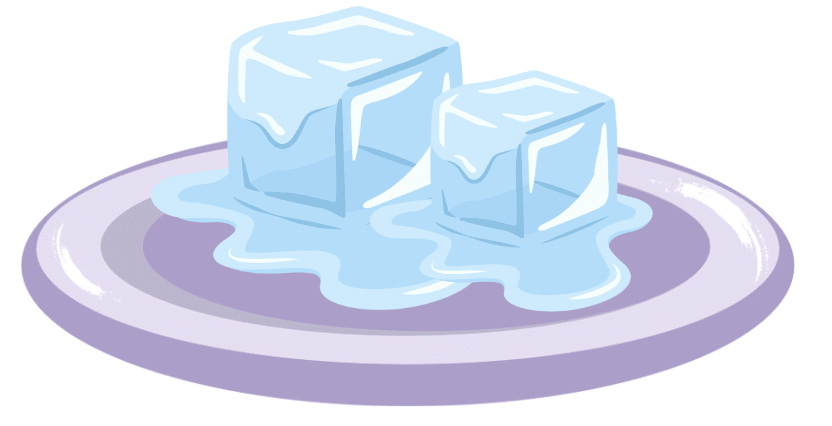
- The ice cubes get heat from the surrounding environment.
- This includes heat from the air around them, the surface of the dish, and even the table they are placed on.
- The heat causes the ice to melt and change into water.
- This heat makes the ice melt and turn into water.
Q5: A burning incense stick is fixed pointing downwards. In which direction would the smoke move? Show with a diagram.
Ans: When an incense stick is burning and fixed pointing downwards, the smoke will move upwards. This happens because smoke rises due to convection.
As the incense stick burns, it heats the air around it, making the air less dense. The cooler, denser air pushes the hot air (and smoke) upward. So, even if the incense stick is pointing downwards, the smoke will still rise.
Diagram
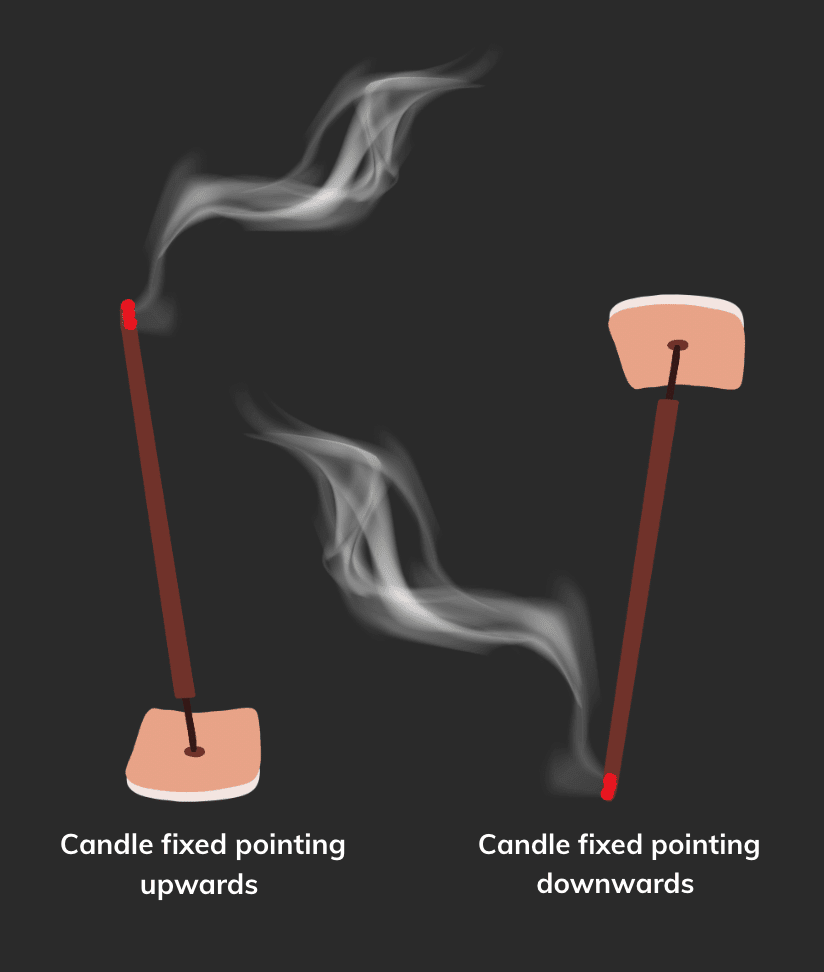
Q6: Two test tubes with water are heated by a candle. Which thermometer (Fig. 7.16a or Fig. 7.16b) will show a higher temperature? Why?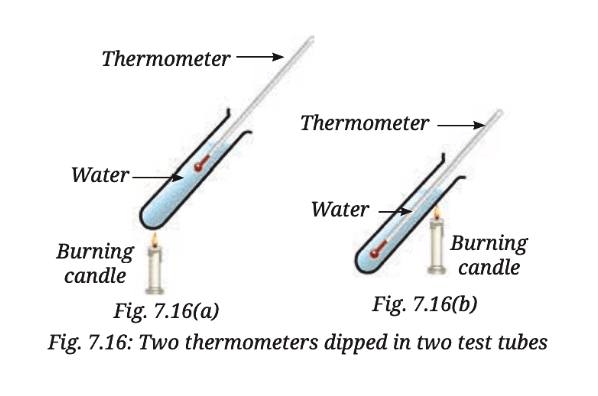
Ans: In the given experiment, the test tube in Fig. 7.16(b), where the thermometer is closer to the flame, will show a higher temperature.
When water is heated by the candle, it becomes hot at the bottom of the test tube. The hot water rises because it is less dense than the cooler water. This movement of water from the bottom to the top is called convection.
Q7: Why are hollow bricks used to construct the outer walls of houses in hot regions?
Ans: Hollow bricks are used because they trap air inside the spaces between the bricks. Air is a poor conductor of heat, meaning it does not allow heat to pass through easily. This helps to reduce heat transfer from the outside to the inside of the house. As a result, the house stays cooler in hot regions, as less heat enters through the walls.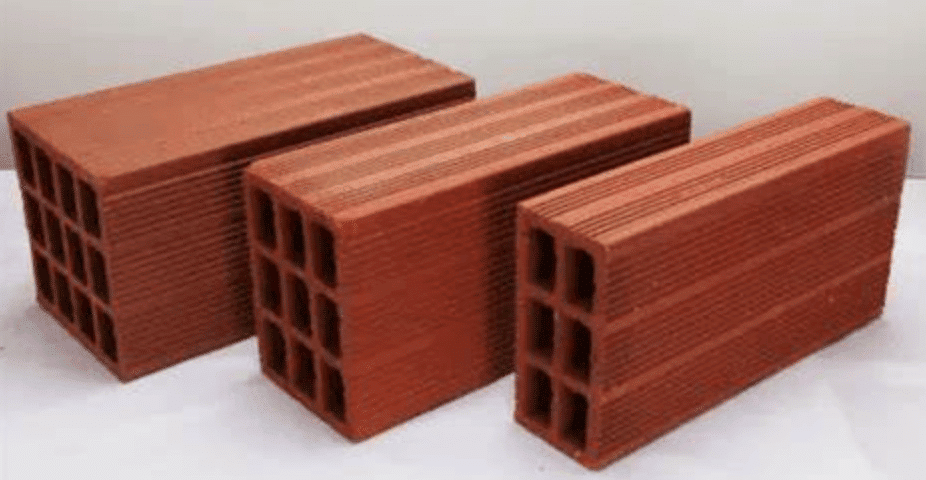
Q8: How do large water bodies prevent extreme temperatures in nearby areas?
Ans: Large water bodies, such as oceans and seas, help prevent extreme temperatures in nearby areas through the sea and land breeze effect.
Sea Breeze:
During the day, the land heats up faster than the water.
The air over the land becomes warmer and rises, while the air over the sea remains cooler.
The cooler air from the sea then moves towards the land, creating a sea breeze.
This cool air from the sea helps lower the temperature of the land near the water, preventing it from getting too hot.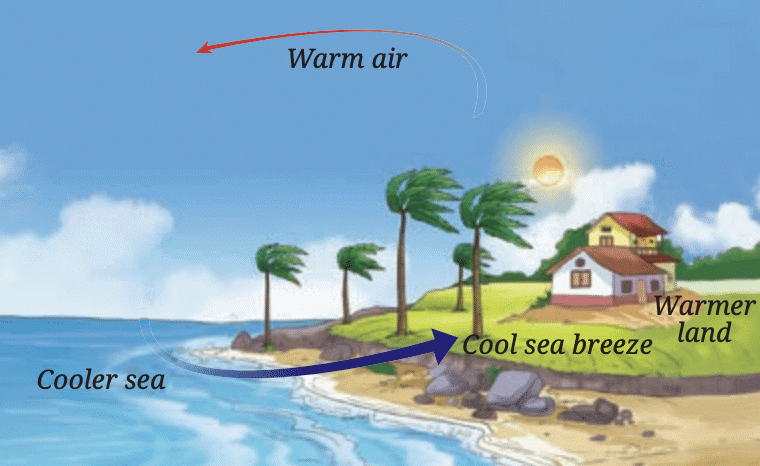
Land Breeze:
During the night, land cools down faster than water.
The air over the land becomes cooler and denser, while the air over the sea remains warmer.
As a result, the cooler air from the land moves towards the sea, creating a land breeze.
Thus at night, the water retains heat longer and warms the surrounding air, preventing it from getting too cold.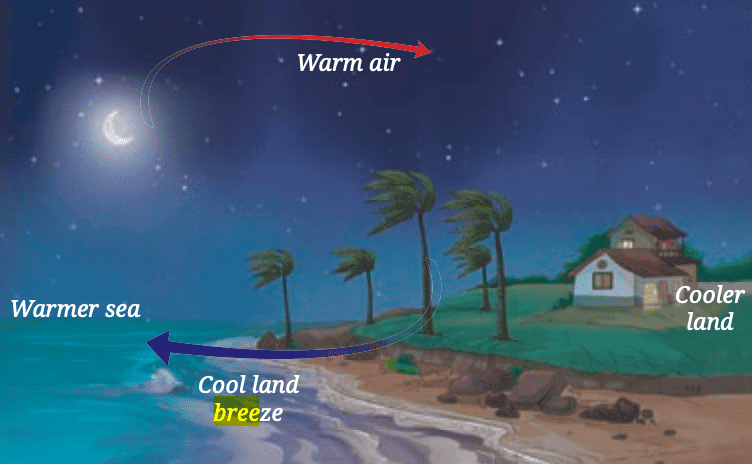
Q9: How does water seep through the surface of the Earth and get stored as groundwater?
Ans: Water seep through the surface of the Earth :
Thus, water seeps through the soil and rocks into the ground, where it gets stored as groundwater.
Q10: The water cycle helps in the redistribution and replenishment of water on the Earth. Justify.
Ans: The water cycle helps move and refill water on Earth in the following ways:
1. Evaporation and Transpiration: Water from lakes, rivers, and oceans turns into vapor (gas) because of the Sun’s heat. Plants also release water into the air through their leaves. This water vapor rises into the air.
2. Condensation: As the water vapor goes up, it cools down and forms clouds.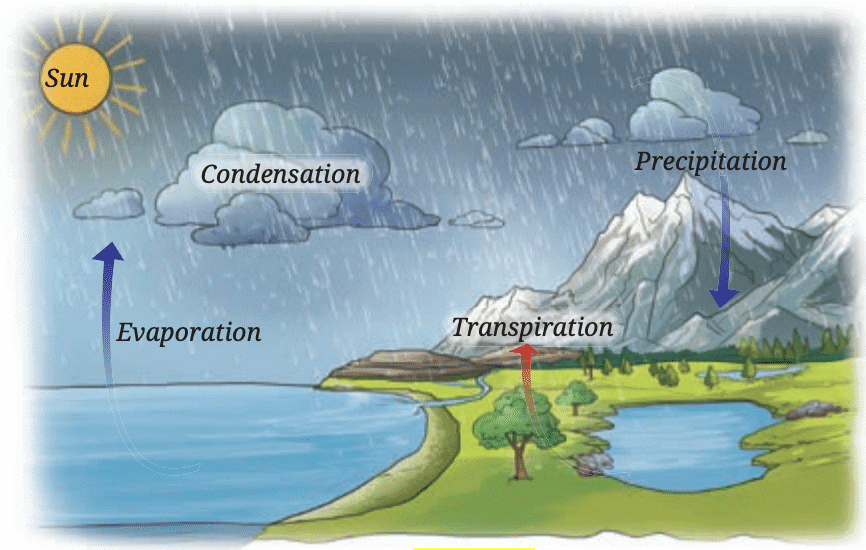
3. Precipitation: When the clouds get heavy, water falls back to Earth as rain, snow, or hail, giving water back to rivers, lakes, and the ground.
4. Infiltration and Runoff: Some water soaks into the ground to refill underground water sources. The rest flows over the land into oceans and lakes.
Thus, water cycle helps move water around the planet and refill water sources, keeping water available for plants, animals, and humans.




































